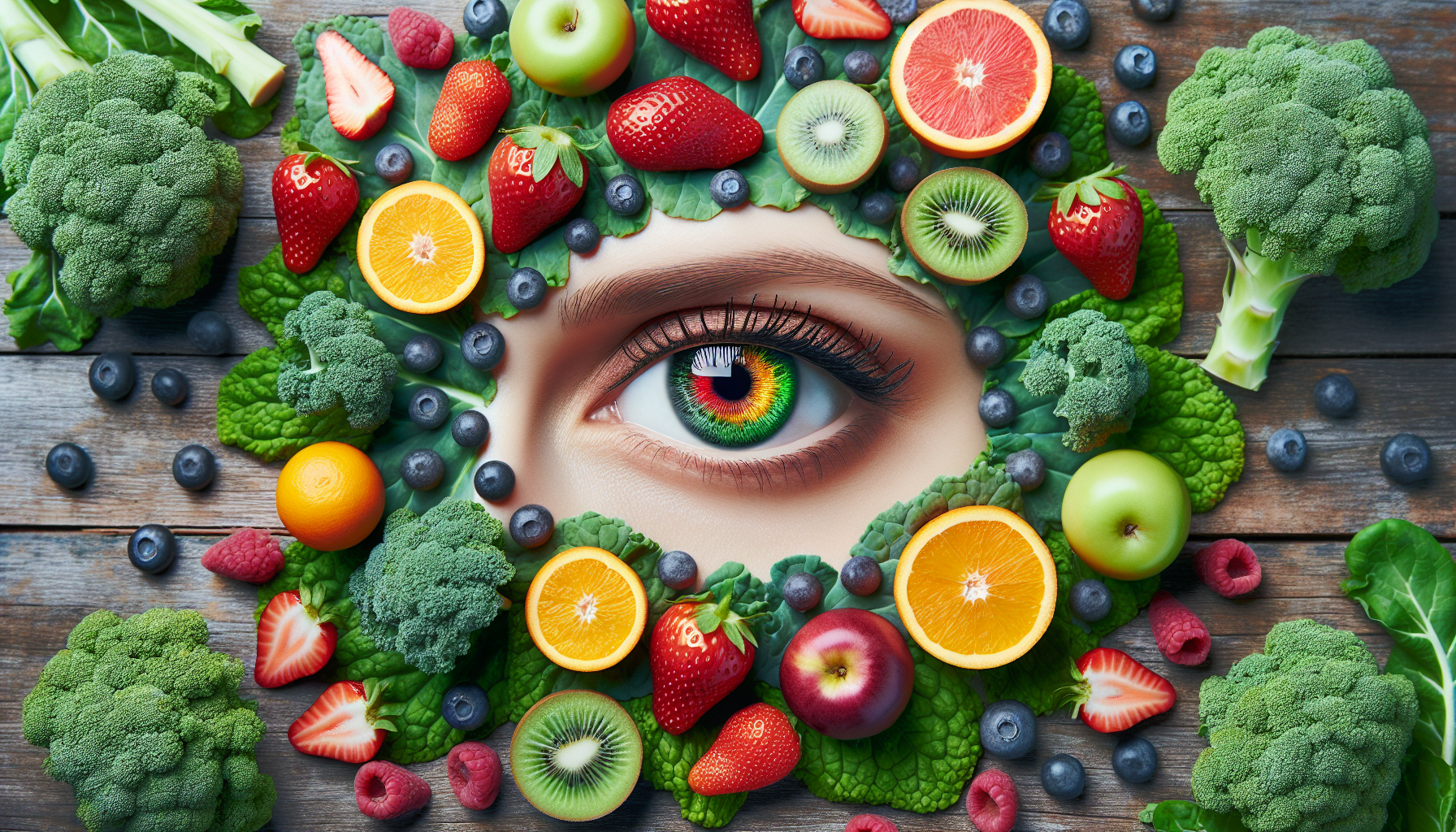Have you ever wondered how the food you eat impacts your overall health, particularly your eye health? It’s a question that might not cross your mind often, but what if the seemingly benign oxalates in your diet could have a significant effect on your vision? It’s worth considering, especially as we increasingly prioritize our wellness in today’s world.
What Are Oxalates?
Oxalates, or oxalic acid, are naturally occurring substances found in a wide variety of plant foods. They can be produced by the body itself as well, but they primarily come from plants. You might find them in foods like spinach, beets, nuts, chocolate, and tea. Although oxalates have been labeled as “anti-nutrients” due to their ability to bind minerals and potentially hinder absorption, they’re not entirely detrimental to your health.
How Do Oxalates Work in the Body?
When you consume foods high in oxalates, they can combine with minerals like calcium in your digestive tract. This binding process can prevent your body from absorbing those minerals effectively. In healthy individuals, this isn’t usually a major concern, but those with specific conditions might need to monitor their oxalate intake more closely.
The Link Between Oxalates and Eye Health
Intriguingly, there’s been some discussion in the health community about the potential connection between oxalates and eye health. While research is still developing, let’s look at some possibilities.
Cataracts: Are Oxalates a Contributor?
Cataracts are a common condition that results in the clouding of the lens in your eye, leading to vision problems. Some studies have suggested that high oxalate levels might be associated with an increased risk of cataracts. This is thought to happen because high oxalate intake may contribute to oxidative stress in the body, which can damage cellular components, including those in your eyes.
Ocular Health and Oxalate Levels
You might not realize that ocular health can be influenced by the levels of oxalates in your body. Chronic high levels might lead to issues like calcium oxalate deposits in the eye. These deposits can potentially lead to problems such as uveitis, a condition involving inflammation in the eye.

Foods High in Oxalates to Watch Out For
You may be surprised to find out which foods contain high levels of oxalates. Here’s a breakdown of some common contenders:
| Food Item | Oxalate Content (in mg per 100g) |
|---|---|
| Spinach | 970 |
| Rhubarb | 860 |
| Beets | 250 |
| Sweet Potatoes | 145 |
| Nuts (Almonds, Cashews) | 30-75 |
| Chocolate | 50-100 |
| Tea (Black and Green) | 20-50 |
Consider keeping an eye on these foods if you’re concerned about oxalate consumption, especially if you have pre-existing eye conditions or risk factors.
The Importance of Balanced Nutrition
Just because some foods are high in oxalates doesn’t mean you need to eliminate them from your diet entirely. Nutritional balance is crucial. Many oxalate-rich foods are also packed with vitamins, minerals, and antioxidants that promote overall health.
Recognizing Symptoms of Oxalate Related Eye Issues
Being aware of your body’s signals is essential. If high oxalate levels are causing issues, you might experience certain symptoms. It’s always a good idea to consult with a healthcare professional, but here are some things to look out for:
Common Symptoms
- Blurry Vision: Is your vision not as clear as it used to be? This could be an early sign of cataracts or other eye issues.
- Eye Pain: If you’re experiencing persistent discomfort, it might warrant further investigation.
- Increased Sensitivity to Light: This could indicate inflammation or irritation.
- Altered Color Perception: Difficulty in distinguishing colors might indicate underlying issues.
When to Seek Medical Advice
If you notice any of these symptoms, don’t hesitate to reach out to your eye doctor. They can help determine if oxalates or other factors could be at play in your ocular health.
Managing Oxalate Intake
So, how can you manage your oxalate intake while still enjoying a variety of foods? Here are some tips:
Hydration is Key
Drinking plenty of water is essential for flushing out excess oxalates from your body. Proper hydration can help prevent the formation of calcium oxalate crystals that could lead to kidney stones or other complications.
Cooking Methods Matter
Cooking can significantly reduce oxalate levels in some foods. For example, boiling spinach can reduce its oxalate content by over half. It’s worth trying different cooking methods to see which ones work best for you.
Balancing Your Meals
Pairing high-oxalate foods with those low in oxalates can help balance absorption rates. Foods rich in calcium, like dairy products, can bind to oxalates in the gut, making them less absorbable.
Oxalate-Free Diet: Is It Necessary?
While avoiding oxalates entirely may sound appealing if you’re concerned, it’s often impractical and unnecessary. Instead of focusing solely on oxalates, consider a more holistic approach to your diet.
Consult a Nutritionist
If you’re considering significant changes to your diet, it’s a great idea to speak with a nutritionist. They can help you create a balanced eating plan that considers your specific health needs and concerns.
Nutritional Alternatives
There are plenty of low-oxalate foods that you can incorporate into your diet without sacrificing the nutritional value you enjoy. Here are some tasty options:
| Low-Oxalate Food Options | Nutritional Benefits |
|---|---|
| Prunes | Rich in fiber and antioxidants |
| Cauliflower | Low in oxalates, high in vitamin C |
| Cabbage | Good source of vitamin K |
| Fish and Poultry | Excellent protein options |
| Asparagus | Low in oxalates and rich in vitamins |
Emphasizing Colorful Fruits and Veggies
Fruits and vegetables are crucial for your overall health, and many are low in oxalates. Just think of colorful options like apples, bananas, and blueberries to keep your meals exciting and nutrient-dense.
The Role of Antioxidants in Eye Health
It’s not just the oxalates you need to think about, but how the properties of other nutrients, particularly antioxidants, play into your eye health. Antioxidants fight oxidative stress, which is significant in preserving vision.
Key Antioxidants to Include
- Vitamin C: Found in citrus fruits and bell peppers, this vitamin helps prevent cataract formation.
- Vitamin E: Nuts and seeds are great sources, protecting the eyes from oxidative damage.
- Lutein and Zeaxanthin: Present in leafy greens like kale and turnip greens; these antioxidants are known for their protective role against age-related macular degeneration.

Lifestyle Factors and Eye Health
Diet is only one piece of the puzzle when it comes to maintaining your eye health. Lifestyle factors can have a significant impact as well.
Importance of Regular Eye Exams
Scheduling routine eye exams is essential for catching potential issues early. Your eye doctor can provide tailored advice based on your specific circumstances, like your diet and family history.
Limiting Screen Time
Too much screen time can strain your eyes, contributing to conditions like digital eye strain. Consider the 20-20-20 rule: every 20 minutes, look at something 20 feet away for at least 20 seconds.
Protecting Your Eyes from UV Light
Wearing sunglasses that block UV rays is an essential part of eye protection. Over time, UV exposure can contribute to cataracts and other eye damage.
Conclusion: Finding Balance in Your Diet
Ultimately, it’s about finding the right balance for your lifestyle. Be mindful of your oxalate intake, but try not to fixate on it. A varied diet that includes plenty of fruits, vegetables, healthy proteins, and whole grains is likely to support your eye health and overall wellness.
Stay informed, actively manage your health, and consult with professionals when needed. Your eyes deserve the best care possible, and understanding how diet can affect them is an important step in ensuring they remain as healthy as possible for years to come.
Remember, the journey to optimal eye health is ongoing. Stay curious and open to learning more about how different factors can impact your vision over time.




